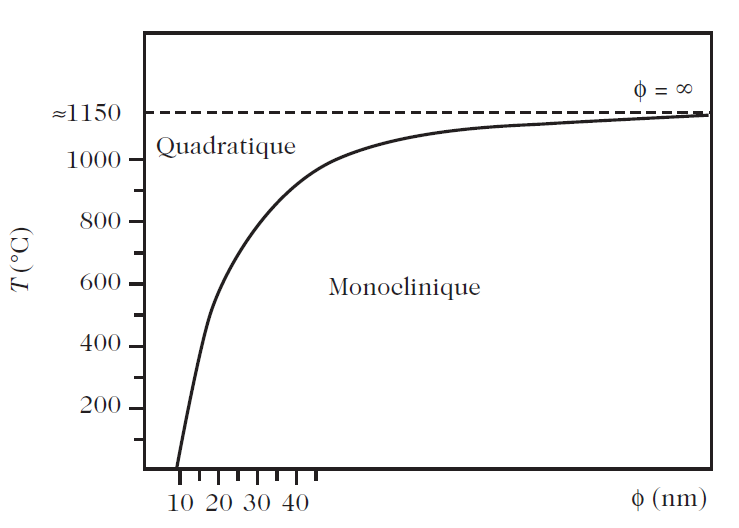
Elementary Thermodynamics of the Grain Size Dependence of Phase Transitions
 المؤلف:
C. Br´ echignac P. Houdy M. Lahmani
المؤلف:
C. Br´ echignac P. Houdy M. Lahmani
 المصدر:
Nanomaterials and Nanochemistry
المصدر:
Nanomaterials and Nanochemistry
 الجزء والصفحة:
p40
الجزء والصفحة:
p40
 28-2-2016
28-2-2016
 1572
1572
Elementary Thermodynamics of the Grain Size Dependence of Phase Transitions
Theory
The various examples described above show that the phase transitions, and more generally the phase diagrams of a material should be considered in a temperature–pressure–grain size space (or rather, reciprocal radius of curvature R for the latter degree of freedom). However, a general theory has not yet been put together. In this context, it is interesting to see what standard thermodynamics has to say about the matter:

Fig. 2.6. Temperature of the tetragonal–cubic phase transition in BaTiO3 as a function of the grain size. Calculated result from and experimental result from
• The stable states of the system are no longer governed by the free enthalpy G at constant T and P. This role is fulfilled by a generalised free enthalpy function G∗ given by G∗ = G − 2γV/R .
• G∗ is no longer a state function of the system. γ is the surface energy, V the molar volume of the material, and R the radius of the nanocrystal, assumed spherical.
• The equilibrium state of a system made from nanometric grains is no longer obtained by the condition dG = 0, but rather by dG∗ = 0.
• There is therefore equilibrium between the phase α and the phase β of the same body if G∗α = G∗β.
• For given temperature and pressure, there is a critical radius Rc at which the phase transition occurs in nanometric grains.
• So the temperature Tc of the phase transition is, in particular, a function of the radius R of the nanocrystals:
Tc = T(P,R, γα, γβ) . This relation has been clearly demonstrated for the tetragonal–cubic transition in BaTiO3.
 الاكثر قراءة في كيمياء النانو
الاكثر قراءة في كيمياء النانو
 اخر الاخبار
اخر الاخبار
اخبار العتبة العباسية المقدسة


